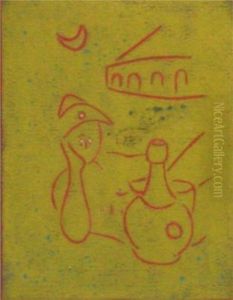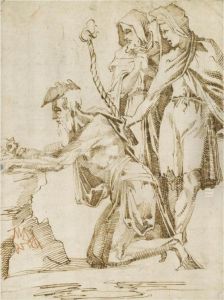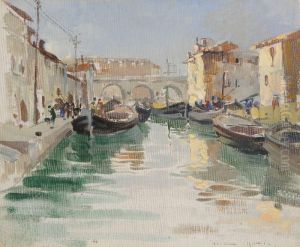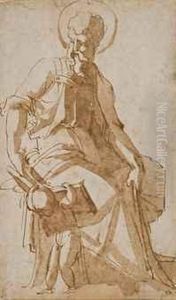Giovanni Bandini Paintings
Giovanni Bandini, an Italian sculptor and architect of the Renaissance period, was born in 1540 in Florence, Italy. Not to be confused with Giovanni Bandini (also known as Giovanni dell'Opera), his career flourished in the late 16th century, a time when the Renaissance art movement was in its mature phase, transitioning into the Mannerist style. Bandini was a student of the renowned sculptor Baccio Bandinelli, and his works were significantly influenced by his teacher's style, which was characterized by muscular figures and a dramatic expression of human emotion and movement.
Throughout his career, Giovanni Bandini contributed to the rich tapestry of Renaissance art with his sculptures and architectural designs. His works were primarily executed in marble and bronze, mediums that were highly favored during the Renaissance for their durability and aesthetic appeal. Bandini's sculptures often depicted religious themes, a common subject matter for the period, reflecting the deep intertwining of art and spirituality in Renaissance Italy.
One of Bandini's notable contributions to the art world was his involvement in the decoration of the Chapel of Eleonora di Toledo in the Palazzo Vecchio, Florence, showcasing his skill in both sculpture and architectural design. His ability to blend these disciplines helped to create spaces that were both aesthetically pleasing and spiritually uplifting, a hallmark of Renaissance artistry.
Despite his contributions, Giovanni Bandini's works have not received the same level of recognition as those of his contemporaries, such as Michelangelo or Leonardo da Vinci. Nevertheless, his sculptures and architectural designs continue to be studied and admired for their craftsmanship and the role they played in the development of the Renaissance style in Italy. Giovanni Bandini died in 1599 in Florence, leaving behind a legacy that, while perhaps not as widely celebrated, remains an important part of the Renaissance's rich artistic heritage.




